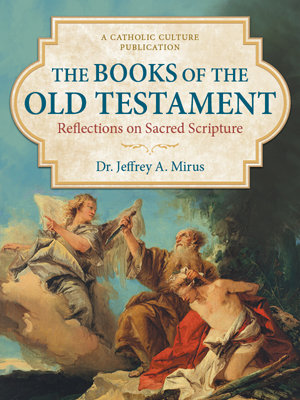Make your gift today!
Help keep Catholics around the world educated and informed.
Already donated? Log in to stop seeing these donation pop-ups.
Voting What You Believe
Republicans are the party of the religious, while Democrats are the party of secularists. That, you may well protest, puts the matter altogether too simply. You are right. But the foregoing generalization is not far off the mark, and is getting closer. Such are the findings of an important article in the Public Interest, "Our Secularist Democratic Party," by Louis Bolce and Gerald De Maio, two social scientists at Baruch College, New York. The dramatic shift was first evident in the Democratic Convention of 1972, when over a third of white delegates fit the definition of secularist, compared with only five percent of the general population falling into that category. For purposes of the study, a "secularist" is someone who rejects scriptural authority, has no religious affiliation, never attends a religious service or prays, and says religion provides no guidance in his daily life. A "traditionalist" is defined by the obverse on each of those scores. (The majority of Americans, it should be noted, are designated as "religious moderates" who fall between the secularist and traditionalist camps.)
The authors call the difference between secularists and traditionalists "the religious gap." "The religious gap among white voters in the 1992, 1996, and 2000 presidential elections was more important than other demographic and social cleavages in the electorate; it was much larger than the gender gap and more significant than any combination of differences in education, income, occupation, age, marital status, and regional groupings." A quarter of white respondents in the study have strongly negative feelings toward "the religious right" and "fundamentalists." The authors write: "The results indicate that over the past decade persons who intensely dislike fundamentalist Christians have found a partisan home in the Democratic Party. Clinton captured 80 percent of these voters in his victories over President Bush in 1992 and over Senator Robert Dole four years later; Gore picked up 70 percent of the anti-fundamentalist vote in the 2000 election. One has to reach back to pre-New Deal America, when the political divisions between Catholics and Protestants encapsulated local ethno-cultural cleavages over prohibition, immigration, public education, and blue laws, to find a period when voting behavior was influenced by this degree of antipathy toward a religious group."
From 1990 to 2000, the New York Times and the Washington Post ran fourteen stories noting the traditionalist-secularist divide between Republican and Democratic parties. In the same time period, they ran 392 articles on the gender gap. In the three presidential elections, white women on average gave Democrats nine percent more of their vote than did white men, while "the average gap separating secularists and religious traditionalists in these same elections was 42 percentage points."
Not Recognizing Their Own
Why do journalists talk so much about assertive believers taking over the Republican Party, and are relatively silent about the takeover of the other party by assertive secularists? "One explanation," the authors say, "involves the difficulties journalists might have in taking notice of an outlook that is so close to their own. They are neutral, which is to say they are normal, which is to say they are at home with the people they know and work with in the secularist camp. In a national survey, a majority of media executives and editors said that conservative Christians had "too much power and influence," and a third thought they posed a "threat to democracy." Not one in the media elites perceived secularists as a threat, and only four percent thought nonbelievers and secularists had too much influence in public life.
With the general public, the picture is very different. A national Pew Research Center poll last March showed that more than half of respondents had unfavorable feelings toward "nonbelievers," almost twice the number that felt unfavorably toward the "Christian conservative movement." It is not in the interest of the Democratic Party, or of their friends in the media, to highlight the religion gap. The authors conclude: "Perhaps it is for this reason more than any other that we do not hear in election-night analyses and post-mortems that Democratic candidates have shorn up their base among the unchurched, atheists, and agnostics, in addition to the ritualistic accounts and warnings about how well Republicans are doing with evangelicals or the Christian Right."
"Our Secularist Democratic Party" is a valuable update on long-term developments. The political potency of the religion gap has received regular attention in these pages, and a superb analytical reference continues to be "It's the Culture, Stupid" by Lyman Kellstedt and colleagues (April 1994). Whether it is a healthy thing for the parties to be so polarized along lines of religion, morality, and culture is quite another matter. My own view is that it is not. But that is a subject for another time.
© 2003 by The Institute on Religion and Public Life, 156 Fifth Avenue, Suite 400, New York, NY 10010
This item 4706 digitally provided courtesy of CatholicCulture.org






